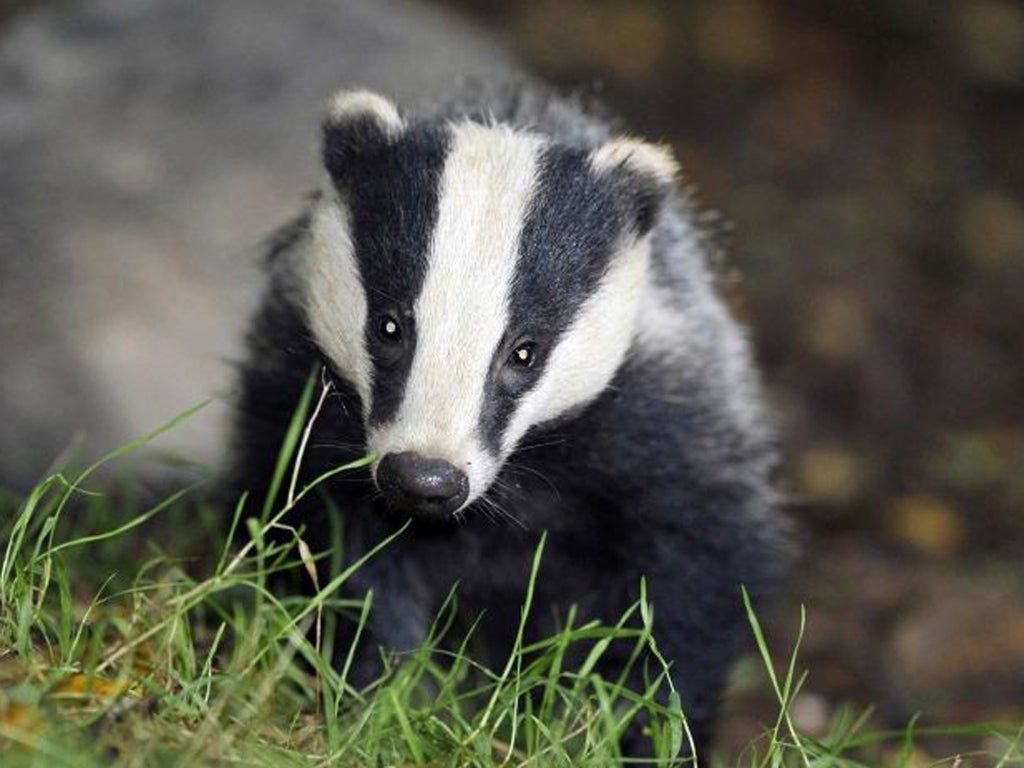Chief vet: We need badger cull to prevent spread of TB to humans
Infected wild animals pose ‘a risk to health’, says Nigel Gibbens, as population control trials begin

Tuberculosis in cattle could spread to humans unless the UK takes bold action to curb of the disease in the country’s badger population, Britain’s chief vet warned today.
With the Government’s highly controversial badger cull season due to start on Saturday, its highest ranking vet, Nigel Gibbens, said there is “no doubt” that badgers are partially responsible for spreading bovine TB through cattle, posing a risk to pets and, in turn, human health.
“If we do not maintain and improve our bovine TB controls and levels of bovine TB continued to increase, the risk of infection to other mammals and humans would inevitably increase,” warned Mr Gibbens, of the Department for the Environment, Food and Rural Affairs (Defra).
His comments come shortly before a trial cull of badgers is due to begin in Somerset and Gloucestershire which aims to kill a total of about 5,000 badgers, or 70 per cent of the estimated population in the two culling zones. If these culls are deemed successful at reducing bovine TB in the area, Environment Secretary Owen Paterson plans to extend them to a further 40 zones within four years resulting in the elimination of an estimated 100,000 badgers.
From Saturday the culling companies are free to begin shooting badgers in the field and trapping them in cages before killing them, although they are not expected to begin the cull immediately. Once the cull commences, they have six weeks to complete the programme and must finish by January 31.
Public opinion is divided on whether the cull should proceed. A new survey out today shows 34 per cent are against the policy, while 29 per cent support it. A further 22 per cent said they didn’t know and 15 per cent had “no strong feeling”, according to the YouGov poll.
The trial culls aim to cut the incidence of bovine TB in the zones by 16 per cent, which Defra regards as a very meaningful reduction that could reverse the steady rise of the endemic disease.
The symptoms of bovine TB in people are the same as the human form of tuberculosis and include coughing, fever, night sweats and weight loss.
Humans would be most likely to pick up bovine TB through their pet cat or dog but they could potentially contract the disease from alpacas, cattle, deer or foxes. The disease is typically spread by inhaling the germs breathed out or coughed up by infected animals or from their urine and excrement. It can also be picked up by consuming unpasteurised milk and dairy products from infected herds and by handling the carcasses of dead carriers through cuts or by not washing your hands.
Bovine TB was relatively common in humans before the introduction of milk pasteurisation and regulator testing of cattle in the 1950s. Over the last 20 years the strain has accounted for just 0.5 per cent of the tuberculosis contracted by humans and Mr Gibbens points out that the risk of contraction is therefore very low. But with the disease spreading rapidly through cattle – at a rate that would see it double over the next nine years and spread geographically - there is a danger that the number could increase, Mr Gibbens said.
The spread of TB must be attacked on all fronts, he said, including through the culling of infected cattle and, potentially, of badgers, depending on how the trials turn out.
The badger cull is highly controversial. Police are preparing for clashes between animal rights activists and farmers and marksmen involved in the trials and one group has threatened to squat Mr Paterson’s second home in southern France in protest. The timing and location of the culls is shrouded in secrecy along with the identities of the participants.
Apart from the emotion connected to the widespread killing of badgers, many opponents argue that the cull is an ineffective way or reducing TB in cattle and could even exacerbate the problem because fleeing badgers could spread the disease more widely. They put the main reason for the spread of the disease down to the movement of infected cattle across the country.
Mr Gibbens said: “There is cattle-to-cattle transmission and badgers infect cattle. We have to deal with both in parallel.”
Both sides agree that the rise of TB is a huge problem. Last year more than 37,000 cattle had to be slaughtered in the UK at a cost to the taxpayer of £100m in the form of partial compensation to the farmers.
Meanwhile, Defra was forced to defend the humanity of the programme after a government paper admitted there was a danger that some animals are likely to be wounded but not immediately killed, some of which may eventually die of secondary infection or starvation.
A Defra spokesman said: “We are confident that controlled shooting will be an effective and humane shooting method, given its widespread use in other species. Operators will be required to follow best-practice guidance, have undertaken training and competence testing and there will be careful monitoring via field observations and post mortems.”
“The humaneness of the pilots will be monitored through field observations and post mortems and a report will be drawn up by the independent panel at the end of the cull,” he added.
The heavily redacted government paper came to light in response to a Freedom of Information request by the animal protection group, Humane Society International.
Join our commenting forum
Join thought-provoking conversations, follow other Independent readers and see their replies
Comments